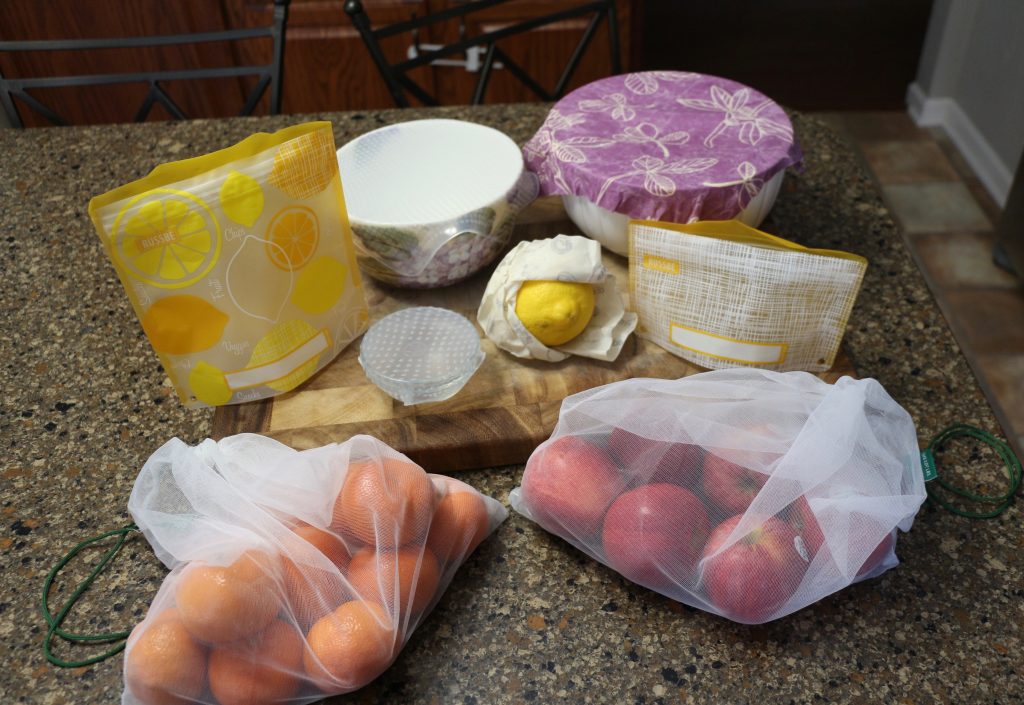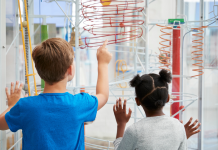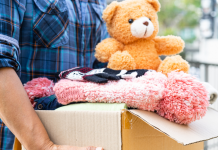In today’s world where there are growing concerns about pollution and climate change, I feel it is my responsibility as a parent to raise my kids with a lifestyle of caring for the environment. I hope that my actions, and the continued actions of my children, will have a positive impact on the health of our planet.

Reduce, Reuse, Recycle
When I was growing up, I learned about the 3 R’s – Reduce, Reuse, Recycle. It’s a simple and straightforward way to help kids think about how they use and consume goods.
I’ve always been passionate about recycling. Recently though, I’ve become more focused on finding ways to reduce and reuse goods. Recycling is absolutely important, but it is a fragile and imperfect process that is more complex than many of us realize.
Think about it this way: the 3 R’s are written in order of importance. First seek to reduce, then reuse what you can and recycle the rest.
This year, I have already started making several changes in our household to reduce what we use. On the surface, they are small changes, but over time I believe they will have a large impact. What’s better is my husband has gotten on board, and I’ve seen my children enjoy them as well!
For this article, I’m focusing on a few easy and inexpensive swaps we’ve made specifically to reduce single-use plastics. There are countless ways to reduce the materials that end up in landfills. I know this list just scratches the surface, but I think these are a good place to start!
Plastic Cling Wrap Swap
I cook at home most of the time because it is budget-friendly and I enjoy preparing meals for my family. With two young children, I have implemented a phased approach to cooking, which is the best way for me to prepare meals with the least amount of stress. Phase 1 consists of chopping veggies, prepping meats, etc. and measuring out seasonings ahead of time. The result is a lot of bowls waiting for Phase 2, which is actually making the dish.
It seemed wasteful to use plastic cling wrap to cover these bowls of prepped veggies and seasonings, only to have to throw the wrap away later. I’ve found two alternative solutions that work well for me.
The first is bees wrap covers, which I purchased at The Baker’s Kitchen in Maumee (they also have a location in downtown Perrysburg). As a side note, if you enjoy cooking and/or baking and have never been, I highly recommend it! It’s so fun to browse their aisles of endless kitchen gadgets.
Back to the bees wrap – this is such a great product because it’s all-natural. It’s basically fabric coated in a beeswax solution. The heat from your hands allows the wrap to mold around the tops of bowls to seal them. Additionally, this product is a great way to seal/store partially used foods. Placing it over the cut edge of produce like onions, avocados, or apples, allows me to store them for much longer than with other storage options. Anyone with a toddler knows how often partially eaten apples get left around!
When I’m prepping raw meat or messier items, I prefer using a silicone cover, which can be stretched over the top of a container. These can be washed with hot water (bees wrap requires cold water washing). I purchased a set with various sizes of covers at T.J. Maxx.
Plastic Bag Swap
Plastic bags are convenient for on-the-go snacks and sandwiches but aren’t very eco-friendly. At T.J. Maxx I also found reusable plastic bags. Yes, they are plastic, but they are durable, washable, and reusable. They come with many different designs and colors, which make them fun for kids and easy to separate snacks for multiple children.
Grocery Shop Swap
We switched to reusable grocery bags a long time ago. This year, I decided to tackle the plastic bags found all over the produce department. I always hated having to put items in a plastic bag for 30 minutes just to transport them home.
I ordered reusable mesh produce bags online, although I have also seen them for sale at local stores in our area. So far I have liked using them and often leave the produce in the bags in my fridge to keep things organized. We haven’t experienced any issues at checkout other than barcodes often won’t scan through the mesh. Cashiers have to open the bag to access the product if an item needs to be scanned.
These are just a few things our family is doing to reduce the materials we use. These alternatives to single-use plastics were easy and inexpensive swaps for us. We are using a lot less cling wrap and fewer single-use plastic bags, which makes me feel like we’re doing our part. Have other tips and tricks? Let us know in the comments!












